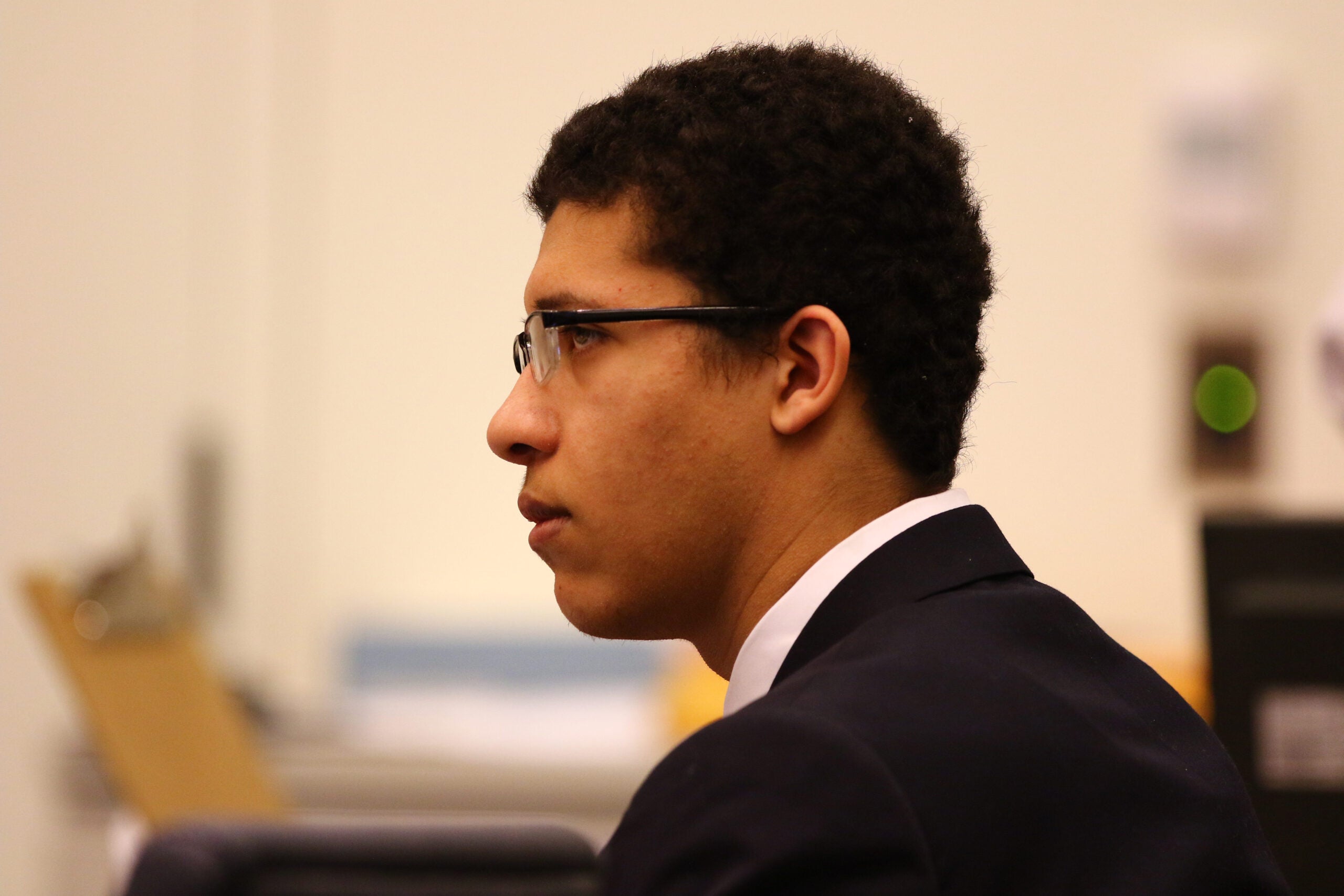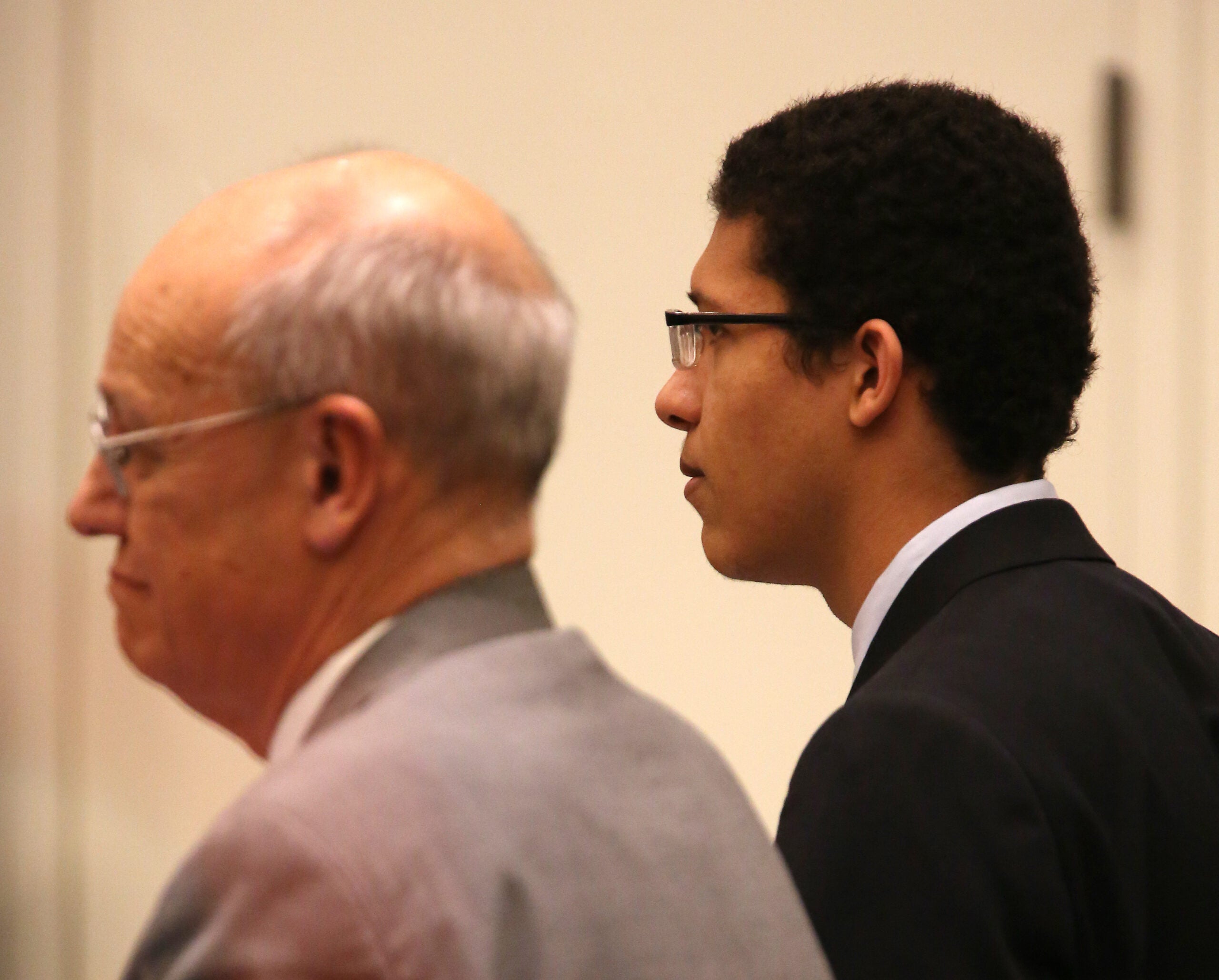Philip Chism - A Deep Dive Into His Life And Controversial Case
Philip Chism's name has become synonymous with one of the most harrowing criminal cases in recent history. At just 14 years old, this Massachusetts teenager found himself at the center of a shocking tragedy that captured national attention. His actions led to a series of events that would forever alter the lives of those involved and leave a lasting mark on the community of Danvers. As we delve into his story, it's crucial to understand the circumstances surrounding his case and the impact it had on both his life and society as a whole.
So, what exactly happened in those fateful moments that thrust Philip Chism into the spotlight? It all started on October 22, 2013, when a tragic incident unfolded at Danvers High School. Chism, who was just a teenager at the time, allegedly followed his math teacher, Colleen Ritzer, into a school bathroom. What happened next would send shockwaves through the community, as Ritzer was found strangled to death. The case quickly became a focal point for discussions around youth crime, mental health, and the justice system's treatment of minors.
As the investigation unfolded, more details about Philip Chism's background began to emerge. His family, originally from Tennessee, had moved to Massachusetts in search of better opportunities. Yet, it's almost as if the move did little to alter the trajectory of events that were about to unfold. In a way, his case highlights the complexities faced by young people navigating difficult circumstances. Now, let's take a closer look at his life and the events that led to his conviction.
Biography - Who is Philip Chism?
| Name | Philip Chism |
|---|---|
| Date of Birth | January 25, 2000 |
| Place of Birth | Tennessee, United States |
| Family | Moved to Massachusetts with family |
| Education | Danvers High School |
What Led Philip Chism to Commit Such a Heinous Crime?
Philip Chism's actions have left many questioning what could drive a young person to commit such a brutal crime. It's not just about understanding the act itself but also about exploring the factors that may have contributed to his behavior. For instance, could it be that his environment played a significant role? Or was it something deeper, something more personal that pushed him over the edge? It's almost like peeling back the layers of an onion to get to the core of the issue.
How Did the Philip Chism Case Impact the Community?
The Philip Chism case had a profound impact on the community of Danvers. People were left reeling, trying to make sense of how such a tragedy could occur in their seemingly peaceful town. The loss of Colleen Ritzer, a beloved teacher, left a gaping hole in the hearts of her students and colleagues. Meanwhile, the trial and subsequent sentencing of Chism sparked debates about the treatment of juvenile offenders. It's a bit like opening a Pandora's box, where every answer leads to more questions about justice and rehabilitation.
Philip Chism - A Name Tied to Tragedy
Philip Chism’s name is now forever linked to the tragic death of Colleen Ritzer. The case garnered widespread media attention, bringing the spotlight not only on Chism but also on the broader issues surrounding juvenile crime. It's almost as if the case became a symbol of the challenges faced by the justice system when dealing with young offenders. The question remains: how do we balance accountability with the opportunity for redemption?
What Role Did Mental Health Play in Philip Chism's Case?
Mental health is often a key factor in cases involving young offenders. In Philip Chism's case, it's worth considering whether undiagnosed or untreated mental health issues could have contributed to his actions. The teenage years can be a tumultuous period, and sometimes, young people struggle to cope with the pressures they face. It's not uncommon for these struggles to manifest in ways that are both unexpected and troubling. So, it's almost like asking whether the system failed him by not addressing potential mental health concerns earlier.
Philip Chism's Sentencing - Life Behind Bars
Philip Chism was sentenced to life in prison for the murder of Colleen Ritzer, with the possibility of parole after serving 25 years. The decision to try him as an adult was a significant one, reflecting the severity of the crime. Yet, it's not just about the sentence itself; it's about the broader implications of such decisions. It's almost like asking whether the punishment fits the crime, especially when the offender is a minor. The justice system often walks a fine line between justice and mercy in cases like these.
What Does the Future Hold for Philip Chism?
The future for Philip Chism remains uncertain. While he was initially sentenced to life in prison, he later pleaded guilty to additional charges after attempting to harm another individual. This development raises questions about his rehabilitation and the effectiveness of the measures in place to address his behavior. It's a bit like wondering if there's any hope for change or if the system has already written him off. The road ahead is likely to be long and challenging, but only time will tell what the outcome will be.
Philip Chism's Family - A Quiet Struggle
Beyond the headlines and courtrooms, Philip Chism's family has had to grapple with their own struggles. Moving from Tennessee to Massachusetts in search of a better life, they likely never imagined the turn of events that would unfold. It's almost like their journey was derailed by circumstances beyond their control. The impact on the family is often overlooked in these situations, yet it's a crucial part of the story. It's important to remember that behind every case, there are real people dealing with real pain.
Philip Chism - A Case Study in Juvenile Justice
Philip Chism's case serves as a case study for those examining the juvenile justice system. It raises important questions about how we handle young offenders and whether the current approach is effective. It's almost like examining a puzzle with missing pieces, where each piece represents a different aspect of the system. By looking at cases like Chism's, we can begin to piece together a more comprehensive understanding of the challenges faced by the justice system and those it serves.
How Can We Prevent Cases Like Philip Chism's in the Future?
Preventing cases like Philip Chism's involves addressing the root causes of juvenile crime. It's not just about punishing offenders but also about providing them with the support and resources they need to make better choices. It's a bit like planting seeds in fertile soil, where the right conditions can help young people grow into productive members of society. By focusing on prevention and intervention, we can work towards reducing the likelihood of such tragedies occurring in the future.
What Lessons Can We Learn from the Philip Chism Case?
The Philip Chism case offers valuable lessons about the importance of early intervention and support for young people. It's a reminder that no one is beyond help and that with the right approach, even the most troubled individuals can find a path to redemption. It's almost like learning that every cloud has a silver lining, where even the darkest moments can lead to positive change. By reflecting on these lessons, we can strive to create a more compassionate and effective justice system.
Philip Chism's story is one that continues to resonate with people across the country. It's a reminder of the complexities involved in addressing juvenile crime and the importance of understanding the factors that contribute to such tragic events. By examining his case, we can gain insights into how we might prevent similar situations from arising in the future. Ultimately, it's about finding a balance between accountability and compassion, ensuring that every young person has the opportunity to turn their life around.

Philip Chism | New York Post

Philip Chism | Boston.com

Philip Chism | Boston.com